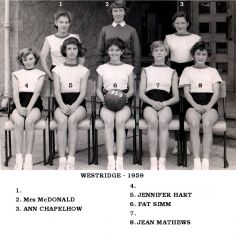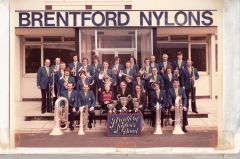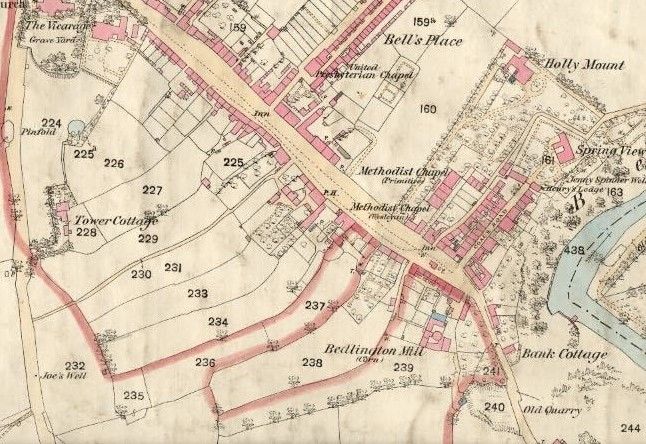.jpg.cdd7f8371d17e2f2f2e2a0e21e02f727.jpg)
Canny lass
Supporting Members-
Posts
3,596 -
Joined
-
Last visited
-
Days Won
407
Content Type
Forums
Gallery
Events
Shop
News
Audio Archive
Timeline
Everything posted by Canny lass
-
.thumb.jpg.7493ddab4a696108cf2b849323d3c155.jpg)
Westridge 1962 MrCooks Class named
Canny lass commented on Alan Edgar (Eggy1948)'s gallery image in Historic Bedlington
-
.thumb.jpg.7493ddab4a696108cf2b849323d3c155.jpg)
1959 Netball Team named.jpg
Canny lass commented on Alan Edgar (Eggy1948)'s gallery image in Historic Bedlington
-
That should, of course, read AD, not BC. Sorry!
-
.thumb.jpg.7493ddab4a696108cf2b849323d3c155.jpg)
1959 Netball Team named.jpg
Canny lass commented on Alan Edgar (Eggy1948)'s gallery image in Historic Bedlington
-
.thumb.jpg.7493ddab4a696108cf2b849323d3c155.jpg)
Westridge 1962 MrCooks Class named
Canny lass commented on Alan Edgar (Eggy1948)'s gallery image in Historic Bedlington
-
... It’s worth mentioning here that these changes didn’t occur overnight. They were the result of long, drawn out processes which often took place over hundreds of years so a change which started in one developmental period may not have become established until the following period in the development. Can the name 'Holly Mount' be Celtic? Practically the only place names surviving from our original language, Celtic, are topographical names, particularly names that describe the natural features of the landscape – like, for example, Holly Mount - a hill with Holly. According to Charles Barber (The English Language, a Historical Introduction) quite a few of our rivers still have Celtic names: Avon and Ouse, he says, are Celtic words for water or stream, Derwent means Oak River and Thames means Dark River. A couple of our county names are also totally Celtic in origin, Kent and Devon, while some county names are Celtic in part only. Cumberland, to give an example, has the first part in Celtic, cumber, and the last part in English, land, and means “the land of the Cymry” that’s to say the land of the Welsh. I’m sure you recognize the word Cymry, meaning Welsh, from the name of a certain political party. Remember here, the Celts were the people who were driven south from all over England and eventually settled in Wales and Cornwall but today’s word Welsh, when referring to the people of Wales, bears no resemblance to the word Cymry, the reason for that being that it’s from a different language. The word Welsh has its origins not in Celtic but in Old English, the language introduced throughout the time of the Anglo-Saxon invasions (700 – 1100 BC). Charles Barber, another scholar, (The English Language: A Historical Introduction, 1997) says that the Old English word, wealh, from which Welsh is derived, originally meant ‘foreigner’ but went on to mean Celt, Welshman, servant or slave, which is what these people were to the invaders. Wealh, albeit in a somewhat distorted form, survives today in the second half of the county name Cornwall. And there you have a good example of how history is reflected in the language we speak. Nothing to do with place names but, by way of anecdote, I can tell you that it’s also found as wal in our word ‘walnut’ from the same period’s wheal-hnutu – literally ‘a foreign nut’ (the shelled variety)! At this point, it’s tempting to think that Holly Mount may have its origins in Celtic, describing as it does a natural feature of the landscape, and not only that, the Holly was a much revered tree, worn in crowns by Celtic chieftains, highly sacred in Celtic mythology and planted near settlements to protect them from lightening strikes. https://thepresenttree.com/blogs/news/holly-tree-meaning. It seems they knew a thing or two those Celts as, in later years, the belief that Holly was resistant to lightening has proved to be justified! Those plantations themselves would create a landscape feature with which to identify your whereabouts. However, Hollymount/Holly Mount is not a name unique to Bedlington, either as a place name or the name of a residential building. Can we get any clues from those? Have there been world wide, multiple, widely accepted linguistic changes from holy to holly? Or, perhaps multiple events of 'holy' significance? I’ve been able to find numerous examples, not only in England but as far afield as America and Australia. Nearer home, in Ireland, the name seems to have been particularly popular among goods owners. A Directory to the Market Towns, Villages, Gentlemen’s Seats and Other Noted Places in Ireland (1814 Ambrose Leet) lists eight “gentlemen’s seats” called Hollymount and one other called Hollymount House. The name was clearly popular at the beginning of the 19th century. Perhaps John Birkenshaw, in choosing the name Hollymount Hall, was simply following the fashion of the Irish gentry. These Irish names are of particular interest because they are clearly not derived from any word meaning holy. We can see this by comparing their Irish Gaelic translations. This allows us to envisage how the name was much earlier in history. The name Hollymount translates to Cnoc an Chuillin where chuillin means Holly and Cnoc means hill. Here, there can be no doubt that the name refers to the Holly bush/tree because the word chuillin bears no resemblance to any of the Irish Gaelic words meaning holy: naofa, beannaithe, diaga or naomh and is therefore not a derivation or distortion of any of those words. The same result is obtained by comparison with another Celtic language, Welsh, and the name Bryn Celyn – Holly Hill. Here, celyn means holly while holy translates as cysegredig, gysegredig or cyseg-lân. There is a similarity, however, in the respective Celtic words for Holly, chuillin and celyn and we can also see a trend in the use of this bush/tree in place names. Another interesting linguistic comparison lies in the order of the words. In English we place the noun (the thing being described) last – Holly Mount. The modifier (the word describing or giving more information about that thing) is placed first – Holly Mount, Holy Mount. In the Celtic languages that order is reversed: Cnoc an Chuillin (Irish Gaelic) means literally ‘Hill the Holly’ as does the Welsh equivalent ‘Bryn Celyn’ - holy hill. As I said earlier, there aren’t many Celtic names left in Britain but I’ve managed to find one on Internet that illustrates the point: ‘Aberdeen’, where Aber means mouth (estuary) and is placed first while dee the name of the river is placed last. Compare that with: Tynemouth, Monmouth or Exmouth. This suggests that ‘Hollymount’ may be a later addition to the English language. Next, we'll have a look at the Old English period of the development of the English language. It's a period of great changes. To be continued ...
-
Nice! Is that Wilf sitting on his barra?
-
The history of the house and Longridge family has a few gaps. I've tried to fill a few by looking at the census records through the years: What happened to Hollymount House and Michael Longridge? 1851, approximately one year after the house was sold to Michael Longridge and two years before he left Bedlington Ironworks, Hollymount is not mentioned in the census either as an address or an area of Bedlington. The 1851 census is somewhat sparse in details, in particular with addresses. However, there are two of the Longridge family living in Bedlington: William Smith Longridge, born 1819, occupation “Iron Master” is registered, along with many other households, at the address “Bedlington Iron Works”. He is 32 years old but appears to have his own household. He is not registered as the head of a family but as having “No family”. In his household are registered 3 other people aged between 23 and 26 years: one “house servant”, one “housemaid2 and one “dairymaid”. William’s neighbours are, on one side a “spade and shovel maker” and on the other a “clerk in the wagon works”. Not far from the iron works, somewhere in the east end of Bedlington, the enumerator has registered Robert ?Berwick? (almost unreadable) Longridge. Robert is a 30 year old “engine maker”, born in Bedlington and married to Elizabeth Selby Longridge, Elizabeth’s place of birth is given as “Africa. Mauritius”. They have a one year old son – Charles B Longridge – also born in Bedlington. Residing with the family are three other persons: one cook, one nurse, and one housemaid. Could this residence be Hollymount Hall? What relation is Robert to Michael? Michael Longridge is not registered in Bedlington. I found him registered at 24 Westgate Street, Newcastle. His occupation is given as “Retired Iron Manufacturer”. Apart from Michael and his wife there are two of the couple’s children registered here: Mary Francis 25yo and Henry Gordon 23 yo mining engineer. Also resident is one male servant aged 22y. Did Michael have two homes? 1861 the census records “Holly Mount” (2 words) as “Uninhabited”. Where are the Longridges? Michael died 1858. 1871 “Holly Mount House” is registered, but not to a household of Longridges. The head of the household is 76 yo labourer,George Henderson who shares the address with his wife 59 yo Julia, his daughter Catherine an 18yo housekeeper, Robert Willis his 38 yo son-in-law (engineer) and John Bailey his 89 yo father-in-law, a retired miner. It seems the house has passed its golden days. It may or may not have anything to do with this but one James Holmes, 29 yo greengrocer (possibly the same JH noted as the occupier of Hollymount House in the sales advert of 1875) is living just across the road next door to the Black Bull with his wife and three children. Just a thought. 1881 Hollymount (house or area unknown) is found in the enumerator’s description of the district (p2) and now, with more detail in the register, we can see that It is situated between the end of Walker Terrace and Spring View/Coach Road. However, Hollymount is not taken up as an address anywhere in the register itself, the entries proceeding direct from Coach Road to Walker Terrace suggesting that the name Hollymount house no longer exists. At the northern end of Walker Terrace, where I would have expected to find Hollymount House, I found instead two “lodging houses”. Two households possibly in the same building. The usual system of indicating this with pen-strokes is missing in this particular district of the census. The residents of the first lodging house are the keeper, his wife and one child together with 4 male lodgers while in the second lodging house we find the keeper, his wife and seventeen lodgers. The address is given as “Walker Terrace”. Has Hollymount House now become a lodging house? It must be quite large with many rooms and it’s not Spring View because that is occupied by the local curate and his housekeeping staff. 1891 Hollymount (one word) appears in the area description but reverts to Holly Mount (two words) in the register where two households are registered. It appears, as I would have expected, between Walker Terrace and Coach Lane. (I also found a pub nearby, “The Bridge Inn”! Anybody heard of that one?) Resident in the first household is George Heddon, the 55yo retired Inkeeper (Innkeeper at the Clayton Arms, Bedlington station 10 years earlier), his wife, son and widowed daughter with her 3yo son Gordon. In the second household we have Henry Ridley, 49 yo his wife Mary and their five children aged 12 – 22 years. 1901 I can find no mention of Hollymount. 1911 Hollymount pops up again, this time as two buildings. a) “1block, 3 flats” housing 3 families of 3-4 people and b) “Hollymount Private House” housing 12 families of 2-7 persons. Well, that’s day 47 in isolation taken care of. I think I deserve a whisky!
-
You can never 'fail' at gardening Vic. Results can never be wrong, they can only be 'different'. I'm not great at it myself and I try to make the most of natural features which saves time, effort and money. You learn by your mistakes and get a lot of time outdoors in which you're forced to think about things other than what's going on the world. A time for inward reflection and extreme relaxation.
-
-
I know what he means! This is one of the reasons I don't use FB, TW or the likes. I have done but couldn't find time to deal with all the requests.
-
I understood thet to mean he was no longer sure the house had been sold direct to Longridge by Birkenshaw.
-
I think John K. may have read that advert incorrectly. The date of the sale is 26 May 1875. That's 17 years after the death of Michael Longridge in 1858.
-
Fantastic description HPW! What playground for you boys! It must have been a canny playground for the occupants as well with its wine cellar, balcony proper ceilings and floors. I've just got to ask: Did you ever see any holly bushes in the grounds?
-
My garden is 2-3 acres! That's the bit nearest the house. Most of it I try to keep looking like woodland so most of those leaf trees are planted by me (saplings dug up on my travels) or self sown by wind and birds. I found the density of the forest close into the house on all sides rather oppressive when I came here and I've worked to open up and make more 'airy' the space around the house. The Hawthorn bush in the foreground is grown from a pip brought from England, Wooler to be precise! I've also planted in hundreds of Birch saplings. I like the way they move in a breeze. Fir trees are so stiff and lifeless to look at. I never tire of that view, which I also have from my kitchen window. It's beautiful whatever the time of year whether it be winter: or, my favourite, early autumn when the cold air pressing down on the lakes causes the moisture to rise into the air: Magical!
-
I'd never have managed that! Thank you! Lovely view, Vic. I can just see you sitting there of an evening with a cold beer. Is there snow on the peaks all year round? Every time I've flown over the Rocky Mts. I've seen snow but I think it's always been early autumn or late spring. Here's what i look at from my veranda. We've gradually opened up the forest right down to the bottom of the hill. I've lost count of how many trees that's involved but they've heated the house and water for thirty years.
-
I think you may be right. The photo shows a rather square sort of building with a door, the main entrance i would guess judging by the garden layout with the 'roundabout' (carriage turning point perhaps) as shown on the 1806 map. On the photo, to the right of the house you can see the remains of an adjoining wall/building and that would agree with the shape of the house on the map - where it seems to be at least double the size. Also "17 apartments" as in the newspaper cutting seems rather a lot for the house in the photo, even if they were just one room.
-
.thumb.jpg.7493ddab4a696108cf2b849323d3c155.jpg)
1975BrentfordNylonsNethertonCollieryBand.jpg
Canny lass commented on Bandsman1966's gallery image in Historic Bedlington
-
Thanks guys! It's not at all what I expected! I think I was expecting something bigger and more extravagant given the size and layout of the gardens.
-
HPW, I'm delighted to find someone who has visited Hollymount Hall! I never saw it myself and I can't find any photos. Can you describe anything about it for me? How big was it? Anthing near the size of Hartford hall or Dene View? On this map from 1860 it appears to have a long, tree-lined drive, leading from Front Street, which later became Hollymount Road and later Hollymount Avenue. It also seems to have had huge, well planned gardens. Were there any signs of either those left when you were a boy?
-
.thumb.jpg.7493ddab4a696108cf2b849323d3c155.jpg)
1975BrentfordNylonsNethertonCollieryBand.jpg
Canny lass commented on Bandsman1966's gallery image in Historic Bedlington
-
.thumb.jpg.7493ddab4a696108cf2b849323d3c155.jpg)
1975BrentfordNylonsNethertonCollieryBand.jpg
Canny lass commented on Bandsman1966's gallery image in Historic Bedlington
-
That would be this post by johndawsonjune1955 in the Railway History topic: “Go along towards the old brickworks and the Choppington Station railway sign is to be seen where it was dumped. its still on some of the stone it was fastened too. will take some work to get it out the ditch tho” John rarely looks in these days but I think he’s active on other sites. Maybe Eggy knows how to contact him?







